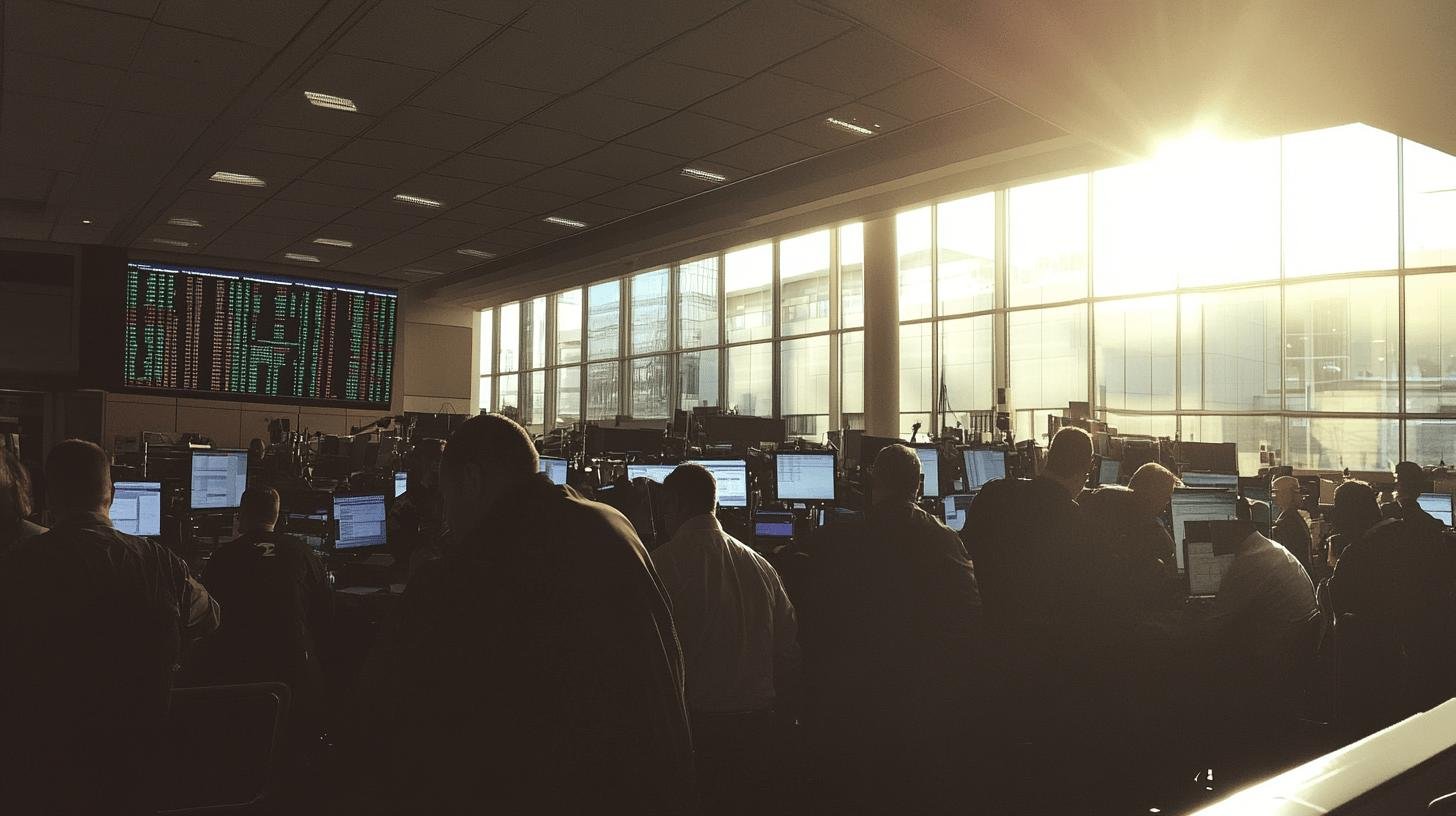TL;DR:
- Historical Context: Emerged in the 18th/19th centuries, linked to the Industrial Revolution; promoted by figures like Adam Smith (invisible hand) and Richard Cobden (free trade).
- Characteristics of laissez faire economics: A system that promotes free markets with little to no government involvement, allowing businesses and individuals to make their own economic decisions without interference.
- Advantages: Increased efficiency, innovation, consumer choice, economic growth, merit-based success.
- Disadvantages: Economic inequality, monopolistic practices, market failures, consumer exploitation, neglect of social welfare.
- Modern Application: Most economies incorporate some regulation, particularly in sectors like technology and finance. Ongoing debates exist about market freedom versus needed regulation.
Wonder what makes some economies thrive with barely any rules? The characteristics of laissez faire economics might hold the answer. This hands-off approach to running an economy believes that markets work best when governments step back and let businesses and people make their own choices. Picture a marketplace where prices, production, and trade flow naturally, guided by what people want to buy and what companies want to sell. In this guide, we’ll break down how this economic system works, explore its history, and see how it shapes our world today.
Characteristics of Laissez Faire Economics: Key Insights
Laissez-faire economics emphasizes minimal government control, allowing market dynamics to shape economic actions. This philosophy supports limited intervention, letting individuals and businesses decide independently.
How does laissez-faire economics work without government control?
It relies on self-regulating markets. Supply and demand naturally adjust, ensuring efficient resource use. This system trusts that the economy will stabilize itself without heavy oversight.
Key Characteristics
- Minimal Government Intervention: The government steps back from pricing, production, and trade. This creates a competitive environment where businesses succeed based on merit.
- Free Market Principles: The economy thrives on competition-driven innovation. Companies react to consumer needs, creating a diverse marketplace.
- Self-Regulating Market: Supply and demand interactions balance the market. Consumer behavior determines prices and production.
What role does supply and demand play in laissez-faire systems?
They are essential, setting the market’s pace. Supply and demand influence prices, guiding what and how much producers should create.
Adam Smith, a classical economist, introduced the ‘invisible hand’ concept, advocating that self-interest aligns personal and societal benefits, boosting economic prosperity.
Key Characteristics of Laissez Faire Economics

Laissez-faire centers on minimal government intervention. This approach empowers individuals and businesses to operate freely in the market. The belief is that the market, left alone, will self-regulate and prosper.
What are the implications of minimal government intervention?
Businesses set prices, decide production, and trade without government constraints. Competition leads to self-correction, fostering efficiency and innovation.
Free Market Principles
Free market principles are core to laissez-faire economics, fostering free competition and efficient resource use. The notion is that competition promotes innovation and benefits consumers.
How do free market principles enable self-regulation?
Through competition. Companies strive to better meet consumer demands efficiently. Only the most competitive thrive, ensuring resources are well-used.
Can you give examples of self-regulating markets?
The tech industry is a prime example, with rapid innovation driven by competition. This exemplifies how markets self-regulate, promoting growth with little government intervention.
Supply and Demand in Laissez Faire
Supply and demand are vital in laissez-faire systems, defining market functions by dictating prices and production.
Why are supply and demand important in laissez-faire economics?
They maintain market balance. Higher demand raises prices, prompting increased production. Lower demand drops prices, limiting production. This ensures efficient resource allocation without external controls.
Historical Context and Evolution of Laissez Faire Economics
Laissez-faire economics rose in the 18th and 19th centuries, aligning with industrial capitalism. The Industrial Revolution marked a period of minimal regulation, allowing industries to thrive rapidly.
How did laissez-faire economics shape the 19th century?
The Industrial Revolution showcased laissez-faire principles. Free market dynamics spurred innovation and growth with few regulatory constraints, proving the power of limited government intervention.
Figures like Adam Smith and Richard Cobden championed laissez-faire ideas. Smith’s ‘invisible hand’ demonstrated how personal interests drive collective economic benefits. Cobden promoted free trade and economic non-interference, influencing policies that lowered tariffs and boosted open markets.
Through these milestones, laissez-faire economics laid modern economic thought’s groundwork, revealing benefits and challenges of minimal regulation.
Advantages and Disadvantages of Laissez Faire Economics
What are the key advantages of laissez-faire economics?
- Increased Efficiency: Markets minimize waste through demand-based resource allocation.
- Innovation: Competition drives product improvements.
- Consumer Choice: Market diversity offers abundant options.
- Economic Growth: Free markets spur rapid expansion.
- Merit-Based Success: Business success hinges on performance.
Laissez-faire thrives on free competition, enhancing efficiency and driving innovation, resulting in diverse consumer choices and economic growth.

What are the main disadvantages of laissez-faire economics?
- Economic Inequality: Wealth concentration widens disparities.
- Monopolistic Practices: Lack of regulation can stifle competition.
- Market Failures: Public goods may be underprovided.
- Consumer Exploitation: Limited oversight may lead to unfair practices.
- Neglect of Social Welfare: Profit focus can overlook wider societal needs.
Critics argue that laissez-faire can cause inequality and enable monopolies. It might not address social welfare, leaving some consumer needs unmet.
How does laissez-faire compare with regulated economic systems?
Regulated systems use government intervention to fix market failures, protect consumers, and ensure competition. Laissez-faire trusts the market to self-regulate, which can be efficient but might ignore broader needs. Critics urge balancing market freedom with regulation for consumer protection and social welfare.
Laissez Faire Economics in Modern Contexts
How is laissez-faire applied in today’s economies?
Pure laissez-faire is rare now. Most countries mix free market principles with regulation to tackle market failures. However, laissez-faire’s core ideas continue to inform policies aiming to reduce government involvement.
What are examples of contemporary laissez-faire policies?
In the U.S., sectors like technology and finance see deregulation, fostering innovation and competition, aligning with laissez-faire’s minimal interference ideals.
Are there debates about market freedom versus regulation today?
Yes, the balance sparks ongoing debates. Advocates favor less regulation for economic dynamism, while critics emphasize rules to prevent monopolies and protect consumers.
Laissez-faire remains influential, underscoring competition and efficiency’s value. Although few economies fully embrace it, its principles guide discussions on balancing market freedom with necessary regulation. This enduring impact shows laissez-faire’s crucial role in shaping economic policies and debates.
Final Words
The characteristics of laissez faire economics show us a world where markets run freely, driven by individual choices rather than government rules. While this approach led to incredible innovation and growth in the past, especially during the Industrial Revolution, today’s economies typically blend these free-market principles with some regulation. Understanding these characteristics helps us better grasp current debates about economic freedom and government oversight. Whether you support more or less regulation, knowing how laissez faire economics works is key to joining these important conversations about our economic future.
FAQ
What are the key characteristics of laissez faire economics?
The main characteristics of laissez faire economics include minimal government intervention, free market competition, and prices determined by supply and demand rather than regulation.
How does laissez faire affect business decisions?
Businesses in a laissez faire system can freely set their prices, choose what to produce, and decide how to operate without government interference.
What role does competition play in this system?
Competition drives innovation and efficiency as businesses strive to offer better products and services to attract customers.
How does pricing work in laissez faire markets?
Prices are determined naturally through supply and demand interactions rather than government controls or regulations.
What makes laissez faire different from other economic systems?
Unlike controlled economies, laissez faire systems rely on market forces and individual decision-making rather than government planning.


